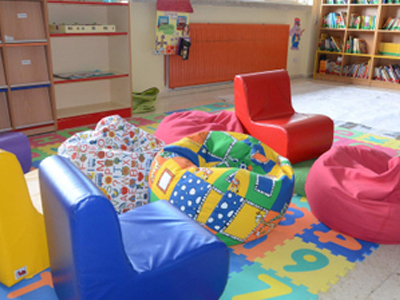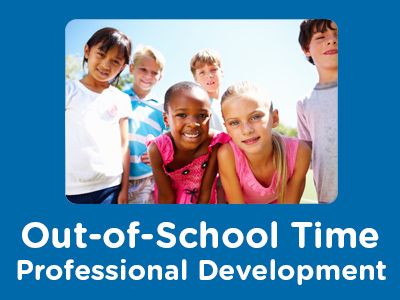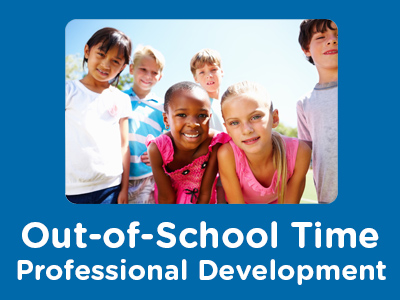 |
Growth and Development of Preschoolers in Family Child Care (CDA 1) |
2.00 |
A supportive and healthy environment is key to promoting the growth and development of preschoolers. In this course, you will identify appropriate health and safety practices, examine how to develop developmentally appropriate activities, and explore how equipment and materials can help stimulate learning.
This course is designed to be part of a Child Development Associate (CDA) Credential™ curriculum. It covers CDA Subject Area 1: Planning a Safe, Healthy Environment to Invite Learning. This course can also be taken as a stand-alone learning event, or as part of a broader early childhood education curriculum.
|
 |
Growth Mindset in the Classroom |
1.25 |
This course covers how to incorporate a growth mindset in the classroom. It includes a comparison between growth and fixed mindset, as well as ways to help students have a "can do" attitude in school. It will help you develop new knowledge about this concept and how you can support a growth mindset in the classroom. This is just one of the many K-12 education courses we offer. |
 |
Guiding School-Age Children in Groups |
2.00 |
When large numbers of children are involved in the program, it is challenging to create and deliver school-age program activities that can meet the needs of all children. The key to success is taking a systematic approach to program planning. It is important for staff to understand how to select appropriate activity options and use effective management strategies that make it possible to offer a balanced variety of simultaneous activity options. This understanding will help staff plan and implement a program that effectively supports, nurtures, and guides individual differences and fosters positive interaction among children in groups. |
 |
Guiding School-Age Children in Groups (Collection) |
2.00 |
When large numbers of children are involved in the program, it is challenging to create and deliver school-age program activities that can meet the needs of all children. The key to success is taking a systematic approach to program planning. It is important for staff to understand how to select appropriate activity options and use effective management strategies that make it possible to offer a balanced variety of simultaneous activity options. This understanding will help staff plan and implement a program that effectively supports, nurtures, and guides individual differences and fosters positive interaction among children in groups. |
 |
Guiding School-Age Children in Groups: MAPs and DDADA |
1.00 |
When large numbers of children are involved in the program, it is challenging to create and deliver school-age program activities that can meet the needs of all children. The key to success is taking a systematic approach to program planning. It is important for staff to understand how to select appropriate activity options, and use effective management strategies that make it possible to offer a balanced variety of simultaneous activity options. This understanding will help staff plan and implement a program that effectively supports, nurtures, and guides individual differences, and fosters positive interaction among children in groups. |
 |
Guiding School-Age Children in Groups: Supervision and Boundaries |
1.00 |
When large numbers of children are involved in the program, it is challenging to create and deliver school-age program activities that can meet the needs of all children. The key to success is taking a systematic approach to program planning. It is important for staff to understand how to select appropriate activity options and use effective management strategies that make it possible to offer a balanced variety of simultaneous activity options. This understanding will help staff plan and implement a program that effectively supports, nurtures, and guides individual differences and fosters positive interaction among children in groups. |
 |
Guiding Students in Groups for Paraprofessionals |
1.00 |
One of the developmental needs of students is their need for guidance with behaviors. This course will develop knowledge and understanding surrounding strategies to use with students to develop self-discipline and self-direction and establish positive relationships with others. This understanding will help paraprofessionals effectively support, nurture, and guide individual differences and fosters positive interaction among students in groups. |
 |
Guiding the Behavior of Individual Children |
2.00 |
This knowledge and understanding will help students develop strategies for creating programs that encourage individual children to develop self-discipline and self-direction, establish positive relationships with others, and exhibit respect for program materials and equipment and the rights of others. |
 |
Guiding the Behavior of Individual Students for Paraprofessionals |
1.00 |
One of the developmental needs of students is their need for guidance with behaviors. This course will develop knowledge and understanding surrounding strategies to use with students to develop their self-discipline, and self-direction, and to establish positive relationships with others. |
 |
Habilidades Básicas de Computación (Spanish) Basic Computer Skills |
2.23 |
En este curso, aprenderá cómo comenzar con su primera computadora, incluido el aprendizaje sobre archivos, configuración y mantenimiento de la computadora e instalación de software.
In this course, you will learn how to get started with your first computer, including learning about files, computer setup and maintenance, and installing software.
|











